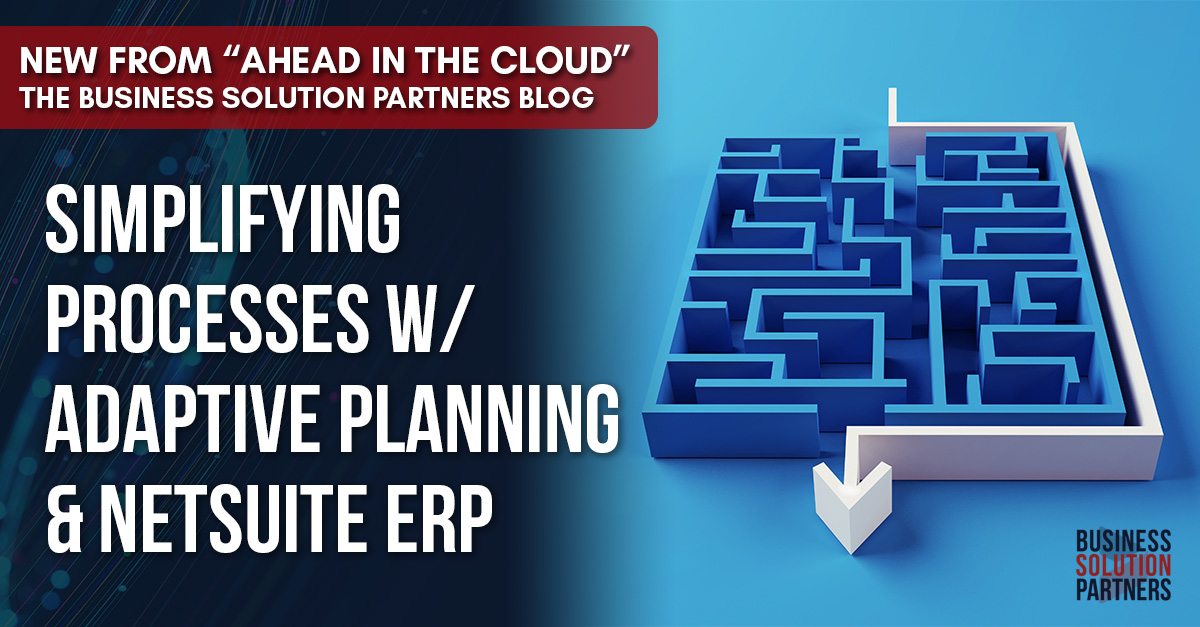How Corporate Performance Management Ensures More Accurate Budgeting and Forecasting
Corporate Performance Management solutions (or CPM) are tools that are used to monitor the performance of an organization. It is an extension of...
2 min read
 Martin Begley
:
Apr 2, 2015 5:00:00 AM
Martin Begley
:
Apr 2, 2015 5:00:00 AM

 The role of the CFO and finance department is changing. No longer are they expected to be tacticians that spend all their time crunching numbers and providing reports. They are now expected to be part of the analysis and decision making teams. The new CFO is a change agent in the organization working with leadership to drive the business forward.
The role of the CFO and finance department is changing. No longer are they expected to be tacticians that spend all their time crunching numbers and providing reports. They are now expected to be part of the analysis and decision making teams. The new CFO is a change agent in the organization working with leadership to drive the business forward.
In a world that is becoming increasingly complex and uncertain, organizations must improve the predictability and agility of their planning process. To do so, the CFO needs to let go of his death grip on the annual budget that is unresponsive to business needs and replace it with a continuous planning process. It is no longer enough to provide a historical snapshot of business performance, but instead a predictability of future growth opportunities is needed.
Continuous planning provides more flexibility allowing change to flow more naturally and creates more alignment between financial groups and business units. This process brings together strategic planning, financial planning and operational planning in an integrated approach to performance management resulting in incremental and continuous improvement.
As the hub of the wheel, the finance department has company-wide visibility into the activities that take place in the organization. Data from many sources flows into finance providing a knowledge base of information that is transferred throughout the organization to support effective decision making.
But in the end, finance leadership and their budget and forecasting professionals are limited by the tools they use to gather, manipulate, and analyze the data they are managing. While there are many different statistics describing the number of companies that still use spreadsheets for planning, it is agreed that the majority of firms still use it as their primary tool.
There are many reasons to dump your spreadsheets and use cloud based planning software. The limitations of spreadsheets are many including:
large data entry efforts
incorrect or missing formulas
multiple versions of the truth
silos of user proprietary data that is not shared
and risk of data loss
And it’s precisely because of these and other limitations that firms cannot manage improvement on a continuous basis. These limiting tools tie the hands of the finance department and make them ineffective.
Organizations that utilize continuous planning tools such as, cloud based planning software Adaptive Insights, experience greater growth than those that use spreadsheets alone. Some of the benefits seen include the following:
Improved visibility and predictability of results
Improved process effectiveness and efficiency
More informed business decisions through more accurate and timely plans
Reduced planning cycle times by up to 90%
Reduction of errors and improved accuracy
More frequent rollouts of rolling forecasts
For more information on these and other ways to increase your firm’s profitability and efficiency, contact us.
About the Author:
Martin Begley, CISA, is Director of Management Consulting Services at Business Solution Partners and is a Certified Information Systems Auditor (CISA). He specializes in helping small and mid-sized businesses meet their strategic goals through designing, implementing, and executing performance management strategies, technology solutions, and corporate policies and procedures. You can follow him on LinkedIn at www.linkedin.com/in/martinbegley/
Corporate Performance Management solutions (or CPM) are tools that are used to monitor the performance of an organization. It is an extension of...

[3 Minute Read] Private equity (PE) firms face a range of challenges when managing their portfolio companies, which can be broadly classified into...

Simplifying and streamlining business processes is crucial for any organization's success. Combining Workday Adaptive Planning and NetSuite ERP can...